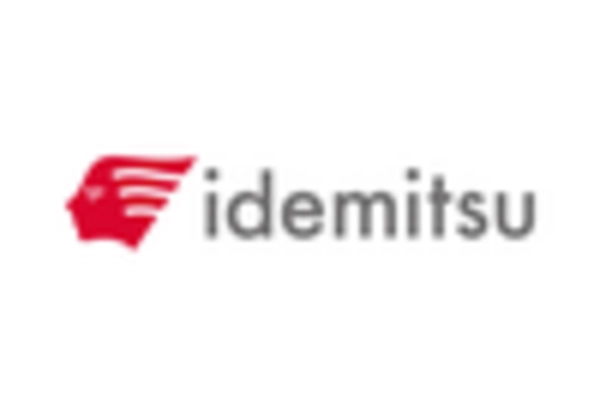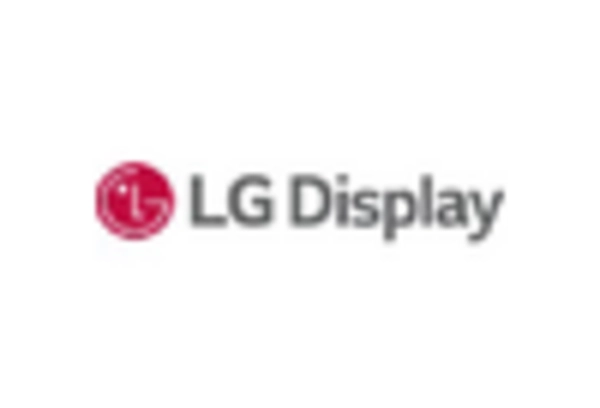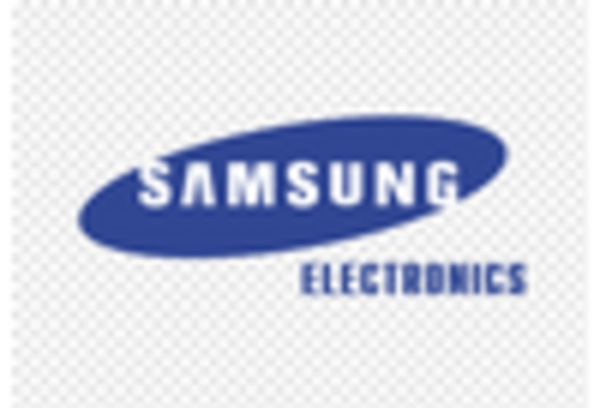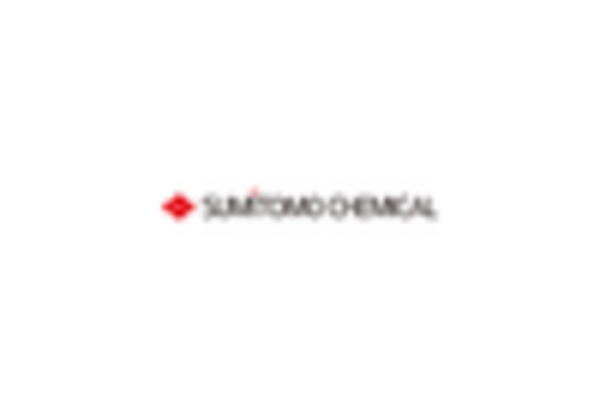Sustainability Initiatives
The increasing emphasis on sustainability is driving the Organic Semiconductor Market. As industries seek to reduce their carbon footprint, organic semiconductors, known for their lower environmental impact compared to traditional materials, are gaining traction. The shift towards renewable energy sources and eco-friendly products is prompting manufacturers to explore organic semiconductors for applications in solar cells and energy-efficient devices. This trend is reflected in the projected growth of the organic photovoltaic market, which is expected to reach USD 10 billion by 2026. Companies are investing in research and development to enhance the performance and longevity of organic semiconductors, aligning with global sustainability goals. As a result, the Organic Semiconductor Market is likely to witness a surge in demand, driven by both regulatory pressures and consumer preferences for greener technologies.
Advancements in Flexible Electronics
The rise of flexible electronics is significantly influencing the Organic Semiconductor Market. With the proliferation of wearable devices, flexible displays, and smart textiles, the demand for organic semiconductors is on the rise. These materials offer unique properties such as lightweight, bendability, and compatibility with various substrates, making them ideal for innovative applications. The market for flexible electronics is projected to grow at a CAGR of over 20% in the coming years, indicating a robust opportunity for organic semiconductors. As manufacturers strive to create thinner and more versatile devices, the Organic Semiconductor Market is poised to benefit from this trend. The integration of organic semiconductors into flexible electronics not only enhances device performance but also opens new avenues for product development, further solidifying their role in the electronics landscape.
Rising Demand for Energy-Efficient Solutions
The escalating demand for energy-efficient solutions is a key driver for the Organic Semiconductor Market. As energy costs continue to rise and environmental concerns become more pressing, industries are increasingly seeking technologies that minimize energy consumption. Organic semiconductors, with their potential for low-power applications, are well-positioned to meet this demand. For instance, organic light-emitting diodes (OLEDs) are becoming a preferred choice for displays due to their energy efficiency and superior color quality. The market for OLEDs is expected to surpass USD 30 billion by 2025, highlighting the growing acceptance of organic semiconductors in mainstream applications. This trend is likely to propel the Organic Semiconductor Market forward, as manufacturers focus on developing innovative solutions that align with energy efficiency goals.
Technological Innovations in Material Science
Technological innovations in material science are reshaping the Organic Semiconductor Market. Ongoing research into new organic materials and their properties is leading to enhanced performance and functionality of organic semiconductors. Breakthroughs in polymer chemistry and nanotechnology are enabling the development of semiconductors with improved charge mobility and stability. This is particularly relevant for applications in organic photovoltaics and organic field-effect transistors, where performance is critical. The market for organic electronics is projected to grow significantly, driven by these advancements. As researchers continue to explore novel materials and fabrication techniques, the Organic Semiconductor Market is likely to experience a wave of innovation, fostering new applications and expanding its reach across various sectors.
Growing Investment in Research and Development
Growing investment in research and development is a pivotal factor propelling the Organic Semiconductor Market. As companies recognize the potential of organic semiconductors in various applications, they are allocating substantial resources to R&D initiatives. This investment is aimed at improving the efficiency, stability, and scalability of organic semiconductor technologies. Notably, government funding and private sector investments are increasing, with many countries prioritizing the development of advanced materials for electronics. The Organic Semiconductor Market is expected to reach USD 50 billion by 2027, underscoring the financial commitment to this sector. As a result, the Organic Semiconductor Market is likely to benefit from enhanced innovation and commercialization of new products, further solidifying its position in the electronics market.














Leave a Comment